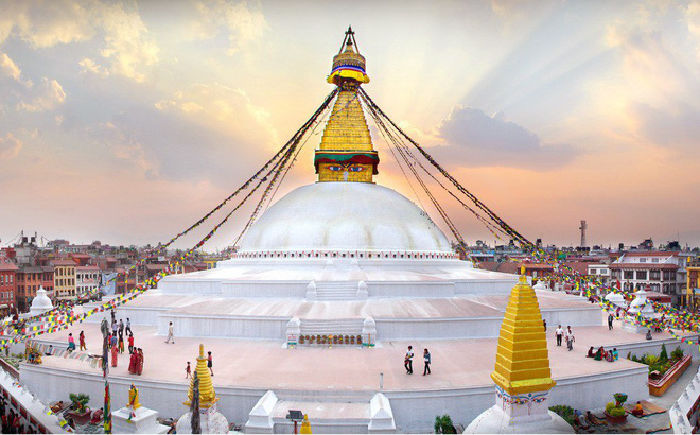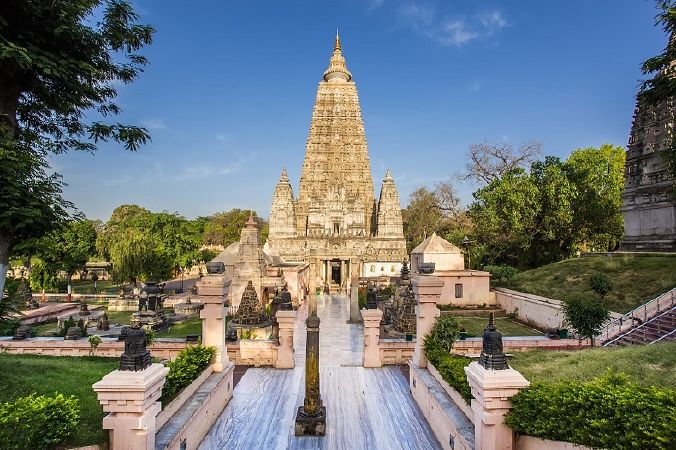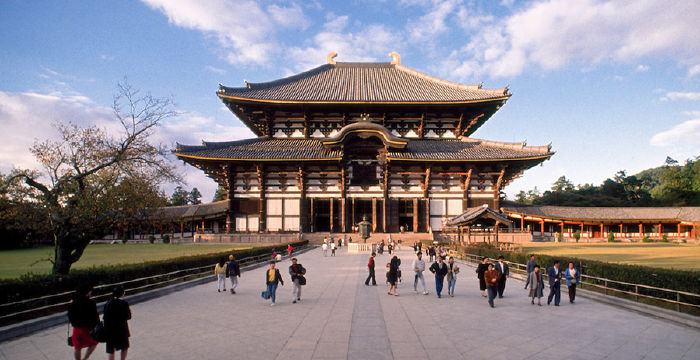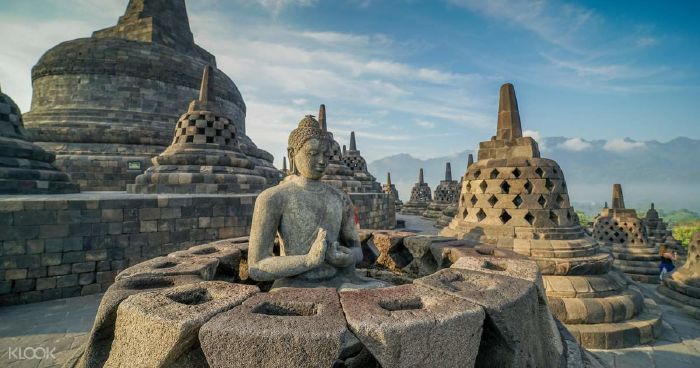Top 10 of the world's holiest Buddhist temples
Buddhism is a great religion that has a profound influence in the culture of most Asian countries. Many temples have been constructed all over the world, becoming the sacred places of worship of the people. According to some notes, Buddhism originated in India in the 5th century BC. The goal of this religion helps students escape suffering, enlightenment, and deliverance. Therefore, through a long history journey, Buddhism becomes a long-standing belief in spiritual value. Temples, temples are built, the sacred place to help people pure and hope to bring blessings to people in the present life. Some places become famous attracting pilgrims and visitors by not only the magnificent architecture but by the most sacred. This article will introduce you to the most sacred Buddhist temples in the world!
1
Boudhanath (Nepal)

The Boudhanath stupa, located in the northeastern outskirts of Kathmandu, is the Buddhist center in Nepal, and many refugees from Tibet have settled in the last few decades. The temple has a geographical location, in the heart of Kathmandu Valley, which is surrounded by magnificent ridges. With 36m in height, over 100m in diameter, it becomes one of the world's largest tower pagodas.
Around the tower is a belt with 108 Buddhist images A Di da, which makes this place famous as sacred is on all four sides of the tower that carved the eyes of the Buddha look away from the four eight directions. Make people feel safe because the Buddha is always watching and living in the birth. Boudhanath is recognized as a UNESCO World Cultural Heritage SITE in 1979, which is a sacred Buddhist and contains many mysterious, magical stories.
2
Shwedagon Pagoda (Myanmar)

The Shwedagon Pagoda (Golden Temple) in Yangon is Myanmar's holiest Buddhist work. It is one of the world's world renowned architectural structures, said to have been built between the 6th and 10th centuries. Located on Singuttara Hill, the pagoda with a height of nearly 100m with its sophisticated architecture, is splendid gold, decorated with thousands of diamonds, gems,... Make it brilliant and visible in most locations in the city.
The temple became more sacred when it is currently storing four of the Buddha's infirmary: The stick of the Buddhist verses, the water purification of the Na ham, the coat of lettuce, and 8 strands of Buddha Shakyamuni. The temple is considered to be a symbol of national unity and the nation's identity of Myanmar.
3
Mahabodhi Temple (India)

Mahabodhi Temple (enlightened Enlightenment) is a Buddhist stupa located in Bodh Gaya, India. The temple is built by a 52m ² tall banyan Tree with four very sophisticated carved tower sides. In 589 BC, under the Bodhi tree, Buddha Shakyamuni was enlightened after 49 days of meditation. About 250 years after the Buddha's Enlightenment, Emperor Asoka built a temple in itself, but the work was destroyed. The present temple was built in the 5th or 6th century.
Mahabodhi temple is one of India's first surviving brick-and-head bricks, which has a significant influence on the architectural development of the later centuries. In 2002, UNESCO recognized the great Enlightenment Mahabodhi itself as a World Heritage SITE.
4
Todaiji (Japan)

Dong Dai Tu-Todaiji is the world's largest wooden temple that is located in the city of Nara, Japan. The temple was built by Shomu Emperor in 743, in the situation that all of Japan suffered from a series of natural disasters and pestilence. The emperor believes that with his heart it is possible to have an impact on the Buddhist arms to help the Japanese people escape the false sea of coal.
Undergoing many incidents and remodeling, the temple is now only two-thirds of its original size but still maintains many sophisticated carvings, typical for Japanese woodcarving and hundreds of other rare relics and artifacts. Centuries passed, Todaiji's architectural works and gardens created a unique cultural nuances, becoming a sacred place, attracting many visitors and not wanting to leave. Dong Dai has been recognized as "the historic monument of Nara-era city"
5
Borobudur (Indonesia)

Located in the heart of Java in Indonesia, 40km north-west of the Old City of Yogyakarta, Borobudur is built in the form of a pagoda consisting of a Buddhist building and 72 towers, carved by about 2 million blocks of gray volcanic rocks mined on Java Island. The temple is 42m tall, with a distinctly three-layer structure, which symbolizes the three realms in her realm, including Kamadhatu (Sex), Rupadhatu (the World) and Arupa Dhatu (infinity), the temple of Borobudur is like a huge, hidden shower of the Buddhist cabinet deep in the structure of the cosmos.
The name Borobudur derives from Vihara Buddha Ur in Sanskrit, meaning "the Buddha himself on the hill". Despite being the pride of Java Buddhism, Borobudur has been buried under volcanic and forested bush for centuries. Borobudur was recognized by UNESCO as a World Heritage SITE in 1991.
Suitable for you
02-07-2023 cookie
02-07-2023 cookie
01-07-2023 cookie
01-07-2023 cookie
01-07-2023 cookie
